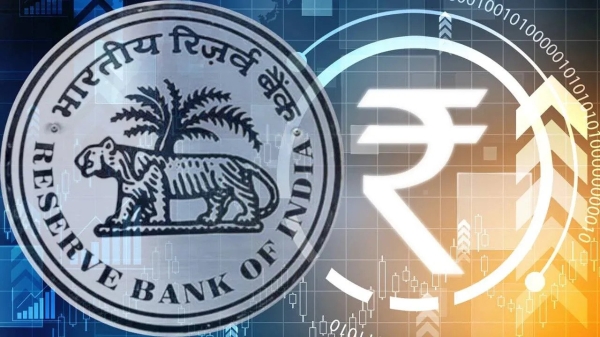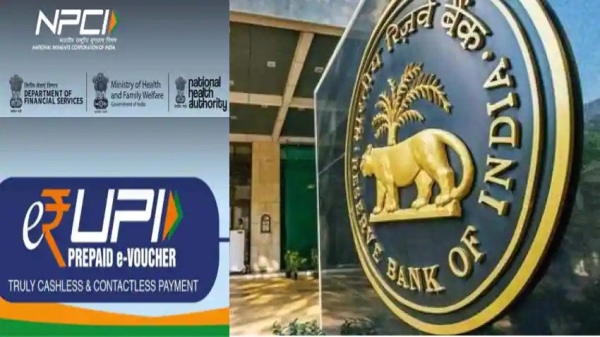How is e-rupee different from UPI | 5 Key takeaways from RBI press conference
The context of the RBI clarification was the conversation in recent days after the launch of a retail central bank digital currency (CBDC) pilot within a closed
- by B2B Desk 2022-12-19 07:02:49
Reserve Bank of India (RBI) Governor Shaktikanta Das explained at a press conference the difference between a digital rupee and a Unified Payments Interface (UPI). Speaking at the post-policy press conference, Das mentioned the differences between the two.
The context of the RBI clarification was the conversation in recent days after the launch of a retail central bank digital currency (CBDC) pilot within a closed user group about the roles of digital currency and UPI.
The Reserve Bank of India (RBI) started a pilot test of the digital rupee for individuals on December 1. The central bank has identified eight banks for the first two-stage project.

Here are five takeaways from the RBI's post-policy press conference.
Bank Intermediation
Das noted that transactions via UPI have to go through a bank, while in the case of digital currency, funds are transferred from one wallet to another without such intervention.
“Any UPI transaction involves the mediation of a bank…In a CBDC, just like fiat currency users go to a bank, withdraw currency and put it in their wallet, similarly, here too users can withdraw digital currency and save it on a mobile phone wallet and make payments," he said. Reserve Bank of India said, "digital currency will move from one person's wallet to another person's wallet without the mediation of the bank."
"UPI is the transfer of money between bank accounts, and the digital rupee is a form of currency payment. It is possible for two entities to receive the wallet and the funds can be moved between them, which is not possible with UPI because UPI you have to involve a bank for payment,” said RBI Deputy Governor T Rabi Sankar.
Anonymity
The governor added that anonymity is a key feature of the digital currency because the currency will be transferred directly from one wallet to another and therefore will not have a digital footprint.
Das added that, as in the case of the physical currency, also for the digital rupee, a third party cannot know to whom the money was transferred because such information is not available in a bank.
Sankar added that the Central Commercial Bank can enable the movement of funds directly between two private entities, natural or legal persons, as is the case of cash. However, at UPI, the movement is only between two bank accounts.
A PAN is required for CBDC
Currently, a person who makes a transaction that exceeds a certain limit must provide his or her personal account number. This was introduced to prevent illegal transfers and limit the flow of black money. Das said that the same rules apply to the newly launched digital currency.
“The Income Tax Department has certain limits for cash payments, such as, beyond a certain limit, you must provide a PAN number; the same rules will apply in the case of the central bank currencies, since they are both currencies”, added the governor.

Amendments to the RBI Code
Das claimed that the recently introduced digital money is subject to the same laws.
"The Reserve Bank of India Act was amended in relation to the CIB bank, and it specifies that the currency would also contain digital currency" the governor said.
The central bank digital currencies concept note published on October 7 states that under the RBI Act 1934, the Reserve Bank has the exclusive right to issue banknotes, which have now been amended to also include the currency in digital form.
“Therefore, in this model, RBI will generate and issue tokens to authorized entities called Token Service Providers (TSPs) who will in turn distribute them to end users engaging in retail transactions,” the note reads.
Technological solutions
The central bank is also looking to harness the technology for digital currency. “We are looking for technological solutions and we know that technology is possible,” added Sankar.
Also Read: How Metaverse will unleash new era in banking: Opportunities and challenges

POPULAR POSTS
Loan EMIs to Drop as RBI Slashes Repo Rate - Full MPC December 2025 Highlights
by Shan, 2025-12-05 11:49:44
Zoho Mail vs Gmail (2025): Which Email Platform Is Best for Businesses, Startups, and Students?
by Shan, 2025-10-09 12:17:26
PM Modi Launches GST Bachat Utsav: Lower Taxes, More Savings for Every Indian Household
by Shan, 2025-09-24 12:20:59
$100K H-1B Visa Fee Explained: Trump’s New Rule, Clarifications & Impact on Indian Tech Workers
by Shan, 2025-09-22 10:11:03
India-US Trade Deal Soon? Chief US Negotiator Arrives in Delhi as Talks Set to Begin Tomorrow
by Shan, 2025-09-15 11:54:28
Modi Meets Xi: Trump’s Tariffs, Strategic Autonomy, and the Future of Asia’s Power Balance
by Shan, 2025-09-03 06:40:06
Google Claims Gemini AI Uses Just ‘Five Drops of Water’ Per Prompt, Sparks Debate
by Shan, 2025-08-22 12:34:27
RECENTLY PUBLISHED

Pine Labs IPO 2025: Listing Date, Grey Market Premium, and Expert Outlook
- by Shan, 2025-11-05 09:57:07

The Agentic Revolution: Why Salesforce Is Betting Its Future on AI Agents
- by Shan, 2025-11-05 10:29:23

Top 10 Insurance Companies in India 2026: Life, Health, and General Insurance Leaders Explained
- by Shan, 2025-10-30 10:06:42

OpenAI Offers ChatGPT Go Free in India: What’s Behind This Big AI Giveaway?
- by Shan, 2025-10-28 12:19:11

Best Silver Investment Platforms for 2025: From CFDs to Digital Vaults Explained
- by Shan, 2025-10-23 12:22:46





 Subscribe now
Subscribe now 